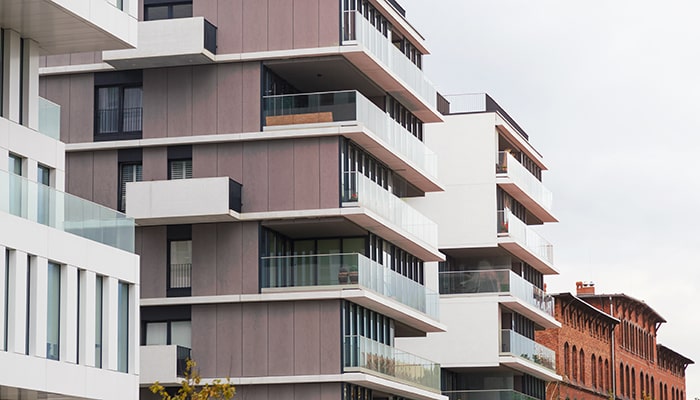October 12, 2023
The 5 Key Benefits of Submetering for Multifamily Owners
Utility submetering allows property owners and managers to track resident utility expenses fairly. In this post, we review the top five benefits of submetering and how it can transform your multifamily property.
If you own or manage a multifamily property, you know how hard it can be to manage utility costs (and residents) fairly. After all, nobody wants to pay more than what they consume. That’s why utility submetering, which measures a unit’s true consumption, is transforming how multifamily managers track expenses.
What is Submetering?
Submetering is a method of utility billing where individual meters are installed at each unit of a multifamily or commercial property. This allows property owners and managers to allocate gas, water and electric costs to individual units within multifamily buildings, homeowners’ associations and developments.
Because utility usage can change from month to month, charging a flat rate or including utilities in the rent is rarely sufficient to recover the cost of utilities each month. This allocation then makes it easier for property owners to recover utility costs each month.
If you’re new to submetering, you can learn more about how it works.
Otherwise, let’s take a look at how it’s making a difference.
5 Benefits of Submetering for Multifamily Properties
Benefit #1: Better NOI
The biggest impact from submetering a multifamily property is the improvement in net operating income (NOI). A submetering solution can turn a utility expense that used to bleed cash into an asset that improves the bottom line. This puts more money in your pocket.
The installation of the meter also has an immediate positive impact on the value of the property. A multifamily property with submeters is attractive to buyers for the same reasons it’s attractive to you. When you flip the property, the increased NOI and property value will strengthen your position.
Benefit #2: Utilities and Rent Aren’t One Big Expense
Multifamily landlords who struggle to collect utilities will sometimes raise rent instead of submetering. The problem with this is that utilities are a large, non-fixed expense. Which means you’re covering a highly variable cost with a fixed rent payment.
This causes two problems.
First, utility rates go up. But unlike the utility provider, you probably can’t raise rent too frequently. This is because frequent rent increases frustrate tenants and make the property less competitive with the market.
Second, utilities are affected by seasonality. Some months are lower, and others are astronomical. If you cover utilities with rent, you’re using a fixed sum that won’t always be enough. As the year progresses, you’d have to compare these surpluses and deficits to see if you’re recovering the money you need to.
Managing utility costs as a separate item allows you to budget your property properly. You know exactly what your costs are and don’t have to worry about accounting for variable expenses.
An added benefit is that this protects you from huge bills if there’s a leak a tenant doesn’t report.
Benefit #3: Utilities Gets Its Own Line Item
Tenant psychology is an interesting thing. If utilities are on the invoice as rent, tenants tend to lump them together. In their mind, they feel like their rent is higher than it actually is.
Some landlords address this by breaking utilities and rent into separate line items on the same bill. In contrast, outsourcing utilities to a third party and invoicing separately creates further separation than a line item can.
Submetering can also increase a tenant’s interest in a property. This is because many tenants like having the ability to reduce their utility usage and save money. They’ll be more likely to choose your property if it comes with a way to keep costs down.
Benefit#4: Less Liability
Property owners who manage their own bills have a huge liability. A $50k per month utility bill is a huge expense you have to spend time recovering. If you can’t, your property will lose cash and cut five figures off the bottom line.
Fortunately, there’s an easier way to manage such a liability – share it with the tenant. Submetering makes tenants physically responsible for their own utilities. And once they’re responsible for them, tenants conserve utilities across the board.
By making tenants responsible for utilities and outsourcing billing to a billing company, you can significantly reduce the liability for your property.
Benefit#5: Long-Term ROI
Submeters for multifamily properties have a delayed but significant ROI. The installation has an upfront cost, but that expenditure is usually recovered quickly. Assuming you’re not collecting already, you can typically recover the cost in the first 6-12 months, 18 if it’s an expensive meter.
The thing is, submeters last a solid 10 years. That means you’re making money for at least 9+ years. That’s roughly a decade of long-term ROI from one upfront investment.
Conclusion
A one-time submeter installation and some minor ongoing maintenance can have a transformative effect on a multifamily property, allowing for greater cost recovery and tenant satisfaction. That’s why more property owners and managers are turning to utility submetering.



